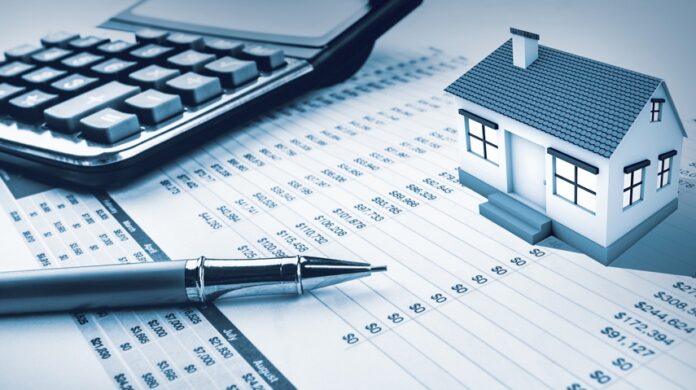
Canadian homeowners are keen to renew their mortgage early without paying any prepayment costs. Typically, financial institutes allow homeowners to renew the mortgages around 150 days before they eventually lapse.
Early mortgage renewal comes with many benefits, including lower rates of interest. About 40% of Canadians with a mortgage need to renew them when the term ends.
Although early mortgage renewal proves beneficial to property owners, you have other alternatives. In this article, the experts at Alpine Credits have discussed some viable options that you can choose as an alternative to the early renewal of mortgages. Click on this link for more information.
Why Would You Look Out For An Early Mortgage Renewal Alternative?

Every homeowner would prioritize their financial ease at the end of the day. Choosing an alternate path for the early renewal of mortgages might bring you several advantages.
You might capitalize on the provisions of lower interest rates, minimize the monthly payments, or enjoy breathing room in times of financial pressure. Eventually, you can prioritize your financial goals by opting out of the mortgage altogether.
Rather than renewing the mortgage early, experts recommend other strategies that might prove financially viable to you.
1. Open A HELOC (Home Equity Line Of Credit)
HELOC allows you access to a part of your home equity based on the part of the mortgage you have already paid off. Also, the banks or financial institutions would consider the monthly payment you can comfortably make. Besides, one can pay only the interest during the draw period. Later, you have the option of repaying the principal amount along with the remaining interest.
Particularly, if you are nearing retirement, you can go for a HELOC and access the cash that you get to fulfill your obligations and other financial needs. Moreover, you would be paying interest only on the amount you actually use.
Due to the low costs involved, a HELOC can be an excellent alternative to early mortgage renewal. However, homeowners need to secure the line by shelling out the closing costs. Certain creditors might reduce or waive it off under certain circumstances.
To qualify for a HELOC, you might have to disclose lower income compared to refinancing. Moreover, the interest rate is variable, which might escalate over time.
2. Get A Home Equity Loan

According to EveryInvestor, considering the market value of your home, you would be able to borrow a significant amount after deducting whatever you owe to the mortgage provider.
Pros:
- Like the interest rate, in this case, would be fixed, you would know how much you need to pay each month.
- Compared to a home equity line of finance, you would enjoy more stability in terms of monthly repayments.
- Since you are borrowing the amount upfront, there would be no chance of losing your access to funds a few months later.
Cons:
- The interest rate would be slightly higher than HELOC.
- Moreover, you need to pay interest on the full amount you decide to borrow.
You can utilize the lump sum amount for clearing the remaining part of the mortgage. Also, you should have some extra funds to manage your financial emergencies. While many people opt for reverse mortgages, a HELOC and home equity loan would be comparatively cheaper. However, you need to shell out the closing costs to obtain the home equity loan.
The only drawback, in this case, is that you need to make an interest payment, regardless of whether you use the money.
3. Refinancing Your Home
Even when you have a mortgage, you can lower the monthly payment by opting for refinancing rather than renewing the mortgage early. This way, you would enjoy better cash flow to make up for your monthly expenses. Refinancing the property with a 30-year term would typically indicate lower payments. Besides, you might qualify for a lower rate of interest, which would serve as a bonus.
A cash-out refinance is yet another option for you. Most creditors require the homeowners to keep 20% of their equity. This implies that one can borrow as much as 80% of the property value. Now, if you already have a mortgage, you would have adequate funds to pay the loan off. The remaining amount would be yours, and you can use it for making other payments. When you opt for a refinance, the closing cost will range between 1% and 4% of the overall amount.
To qualify for a refinance, you would require a credit score of more than 620. Besides, homeowners with better credit scores can qualify for lower interest rates. For retirees, refinancing might be a problem if the income is irregular.
However, after assessing your retirement account assets, annuity income, pension income, and social security payments, certain lenders might consider you for the loan.
4. Downsize Your Home Or Sell It Off

To get 100% access to your home equity, you might consider selling it off. It can be a great option if you are ready to downsize your home. Large homes might prove to be too expensive to maintain. Moreover, you might be shelling out hefty property taxes. You can have adequate funds to purchase a more comfortable and smaller home in the process. Next, you can invest the extra money wisely to generate a stable income.
One of the strategic approaches is to sell your property to your children and rent it back. You can pay the rent from the amount you get on selling it off. Your children would be the landlord and obtain rental income. This amount would help them manage the taxes, depreciation charges, and maintenance.
Endnote
Renewing your mortgage early is definitely a great decision. But why not capitalize on other opportunities that might ease up your cash flow? It makes sense to consult the experts before making serious financial decisions. This is why most homeowners reach out to professionals for guidance before finalizing their move. With this approach, you can make significant savings over time while easing up your cash flow.











